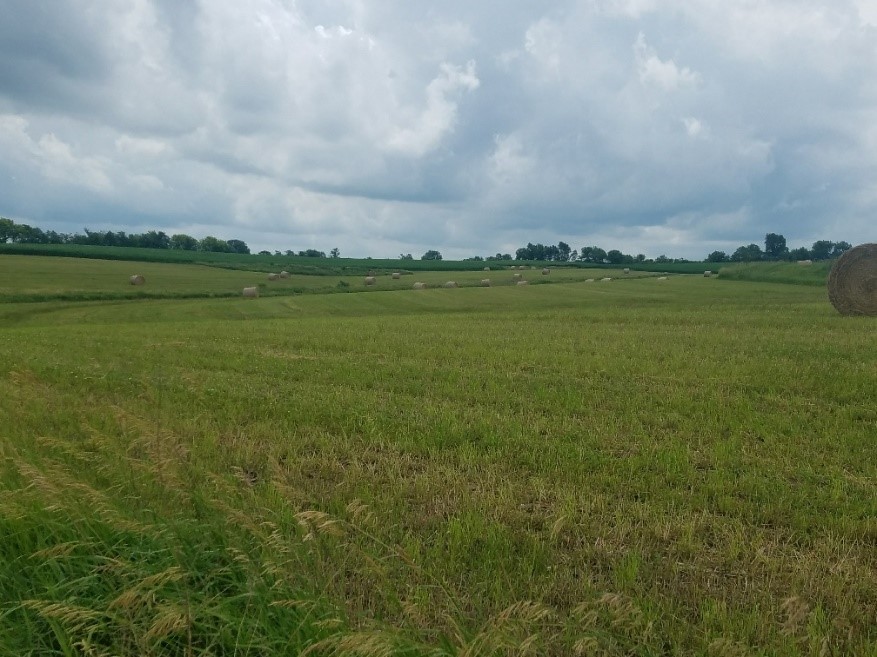Seeding Sidehills Helps Farmers
Through the Taylor WQI project, Bennett has seeded 26 marginal acres to a hay mix in 2017 and plans to seed an additional 10 acres in 2019 to improve his operation, environmentally and economically.
Rain drops on bare soil are more like little bombs, making soil more prone to wash downstream. But Tim Bennett and his family are fighting back. They’ve enrolled in a program aimed at keeping nutrients and soil on the land and out of waterways.
“Tim is always willing to try something new,” says Erin Ogle, coordinator of the Taylor County Water Quality Initiative (WQI). The program offers access to new technology that provides economic assessments, as well as cost share for specific seeding programs.
The Bennett’s seeded about 26 acres in 2017 and plans to seed 10 more this year after an economic analysis based on satellite imagery showed they could save over $5,000. “It was enough for me to lean towards it as a viable option,” Bennett says.
There were areas of the farm that really shouldn’t be in row crops – like the sides of hills. So, having a viable option and the ability to efficiently fold in other parts of our operation was also key to our decision, he indicated.
The economic analysis also took into account that Bennett could provide his own cattle feed and a rough calculation on soil loss savings. While very difficult to assign a specific dollar amount to grazing cattle vs. feeding them grain; and to savings for reducing soil loss, those aspects helped tip the scale for Bennett. Fuel savings from fewer passes with input equipment and harvest helped make the biggest difference.
“I value being able to keep my soil intact,” he says. “Parts of this farm have been in our family for 3 decades.”
The approach allowed Bennett to be a little creative as well. Visitors to his farm won’t find the 36 acres in neat little square patches. He seeded hill sides that were otherwise vulnerable and unprofitable. The approach slows sediment and nutrients that may run off due to those pesky rain drops or wind.
Hay harvest was a game changer for seeding down crop ground. Providing forage for his livestock is more profitable than cropping unproductive side hills.
In fact, water quality monitoring done by Ogle showed that Bennett reduced nitrogen loss by 27 percent and phosphorus loss by 38 percent. Those are two nutrients that help plants grow, but when found in high concentrations in waterways can cause issues for stream life and drinking water.
Bennett says his success doesn’t make him an expert. “No farmer wants to lose money and each farm, soil type and other factors vary greatly,” Bennett says, “so the analysis has to be tailor made to each operation. I wouldn’t pretend to give advice to others. But, I’m more than happy to share my experience and the factors we considered.”



